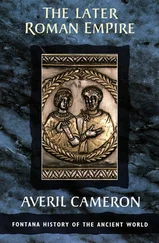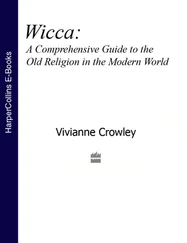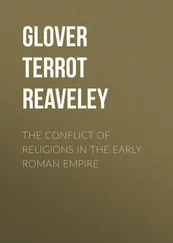1 ...7 8 9 11 12 13 ...27 One sign of this is that certain conventional equations between gods from different traditions became very widespread: Venus became the conventional translation for Aphrodite, Juno for Hera despite differences in the ways they had been imagined in the past. 27Eventually these conventional equations gave birth to new forms of the gods, just as Greek and Roman theonyms rapidly became dominant, replacing names in Celtic, Germanic, Aramaic and other languages. 28Canonical visual types for Greek deities such as Apollo and Athena had already become established in the classical and early Hellenistic periods. Rapid Roman expansion in the west disseminated these images and names very widely, and these versions of the gods became entrenched in the imagination and ritual practices as a result. 29There is also a noticeable shift in how gods were represented in the Roman Near East where anthropomorphic and especially Hellenizing images became widespread. In Egypt ancient gods even came to be portrayed in Roman military costume. 30These changes in what we call and analyse as ›semiotic forms‹ later in the volume profoundly changed rituals and religion. It is one of the unintended consequences of religious change through the field of religious action that was the Roman Empire.
Conventions about ritual practices also became established. Classical Greek and Roman forms of animal sacrifice became more widespread. Although how the two traditions performed the sacrifice varied, the general pattern of sacrificing domestic animals and sharing meat among some or all of the participants, became a norm. Pausanias specifically comments on cases where local traditions depart from this, for example in the sacrifice of wild animals to Artemis Laphria at Patras ( Description of Greece 7.18.9–13). Instances of human sacrifice, real or imagined, also appear in classical texts as markers of difference. 31In the west there were changes to established practices in the last decades BC and the first AD. 32These included new styles of anthropomorphic representation, the dissemination of Latin epigraphy used mainly for religious inscriptions on votives or funerary markers, and the adoption of a set of rituals of Mediterranean origin including the vow and the use of curse tablets. 33
The spread of specific rituals is also widely attested. One example is the Roman practice of making a conditional vow to a deity, an offering that would only be handed over if the gods did his or her part. 34Another is the technology of making and hiding curse tablets, attested in east and west. 35Rarer, because more expensive, were the initiation rituals associated with mysteries that in the classical period had taken place in just a few places and in the Roman period were much more widespread. It seems that certain ritual traditions acquired a prestige that meant they were often imitated or incorporated into the worship of other deities or the local traditions of other places. None of this was directed by imperial authorities, but the fact of empire maybe made this processes easier, just as it facilitated the transfer of other technologies for example in craft production, building and decorative arts.
There is very little evidence of attempts to coerce religious conformity before the third century AD. It is easier to compile a dossier of state actions against religious deviance. 36Republican religious authorities—mainly the Senate and the major priestly colleges which were themselves filled by senators—were mostly concerned with religious negligence and their focus was on the proper maintenance of the public cults of Rome, those rituals performed by priests and magistrates and generals on behalf of the citizen body. Greek city-states too had policed their public cults and sometimes tried to regulate the religious activities of their cities: the trial of Socrates by the city of Athens in 399 BC is the most famous example. At Rome the neglect of public rituals or mistakes in their performance was usually detected retrospectively, as an explanation for some military disaster. Divination of various kinds indicated which ritual remedies were required. Plagues and portents elicited similar official responses. The religious behaviour of individual Romans acting in a private capacity was rarely an issue, even when it was derided as superstitio . 37
The best documented exception to this is a decree passed by the senate in 186 BC imposing restrictions on the way Bacchic ritual could be performed in Italy. 38It is probably significant that much of the panic focuses on unfamiliar activities. Foreign groups were occasionally mocked in satire, and the performance of unusual rituals was often one component of their negative characterization. Worshippers of Jewish and Egyptian cults in the City of Rome were expelled a few times at the turn of the millennium, although in this period it is never easy to distinguish religious from political factors. 39Early attacks on Christians seem also focused on what they did not do (animal sacrifice, cult of the gods, worship of the emperors,) rather than on what they actually did or believed, of which non-Christians were perhaps usually ignorant.
Formally none of this changed with the transition to empire, but in practice emperors took all the key decisions about cult in the city of Rome while no person or authority took responsibility for regulating the religious life of the empire. Neither the senate nor the senators lost their local religious roles entirely at least in so far as cult in the capital was concerned. 40Senatorial priests like the Arvals and the Pontiffs continued to manage the ritual affairs of the city of Rome down into the late fourth century. Yet Roman citizens abroad were in practice beyond the reach of their supervision. A letter of Pliny makes it clear that the authority of the pontiffs over graves did not extend to the provinces. Governors had some religious duties, in practice just another aspect of their general and loosely described powers of oversight. 41Commanders led their units in collective cult. In almost every case what we can see are communities of Roman citizens, scattered across the empire, conducting cult together under the guidance of their most prominent social members. 42
Meanwhile non-citizens did as they always had done, but now often with more ritual possibilities at their disposal. 43Local religious authority took different forms, that of priests in Egypt and some Syrian cities, of civic authorities in Greek cities. When we can see this in any detail, for example in the working of religious councils such as the gerousia of Ephesos or the sanhedrin in Jerusalem, local religious arrangements were every bit as complex as in Rome itself. Apart from a very few general prohibitions which were perhaps rarely enforced, the empire rested very lightly on the religious lives of its subjects. Traditional religious authorities such as the Egyptian priesthood and the councils of Greek cities had been weakened. Indeed emperors had removed more authority than they had imposed. The principate was not a period of exceptional religious tolerance and freedom. 44The great mass of the population worshipped their ancestral gods in accord with local norms which were backed up by local authorities just as they had done for many centuries. But it was easier to evade that local authority and the exclusive bonds of the Greek polis in particular had loosened with more individuals marrying citizens of other cities, holding dual citizenships, relocating and travelling at will and so on. All this opened up many more spaces for experimentation and innovation. 45
4 The Empire in the World
In some respects the Empire constituted a geographical and demographic space with some common religious experiences. Imperial government affected all parts. The habit of governing through cities—not quite the rule in the Republican empire that still made use of many alliances with kings and tribal leaders, but increasingly the case under the emperors—gave religious authority almost everywhere to the kind of priest that came from the same classes as property owning councillors and magistrates. 46That had knock on effects for the funding of collective rituals and temple building, which depended on variable combinations of income from civic revenues and the generosity (euergetism) of each city’s most wealthy citizens. Equally the lack of imperial oversight before the middle of the third century, and then the increased attempts to control and harness religion after Decius affected all parts of the empire. The General Persecution initiated by Diocletian was precisely that, even if some regions (and probably some cities) were keener to turn on Christian minorities than were others.
Читать дальше












